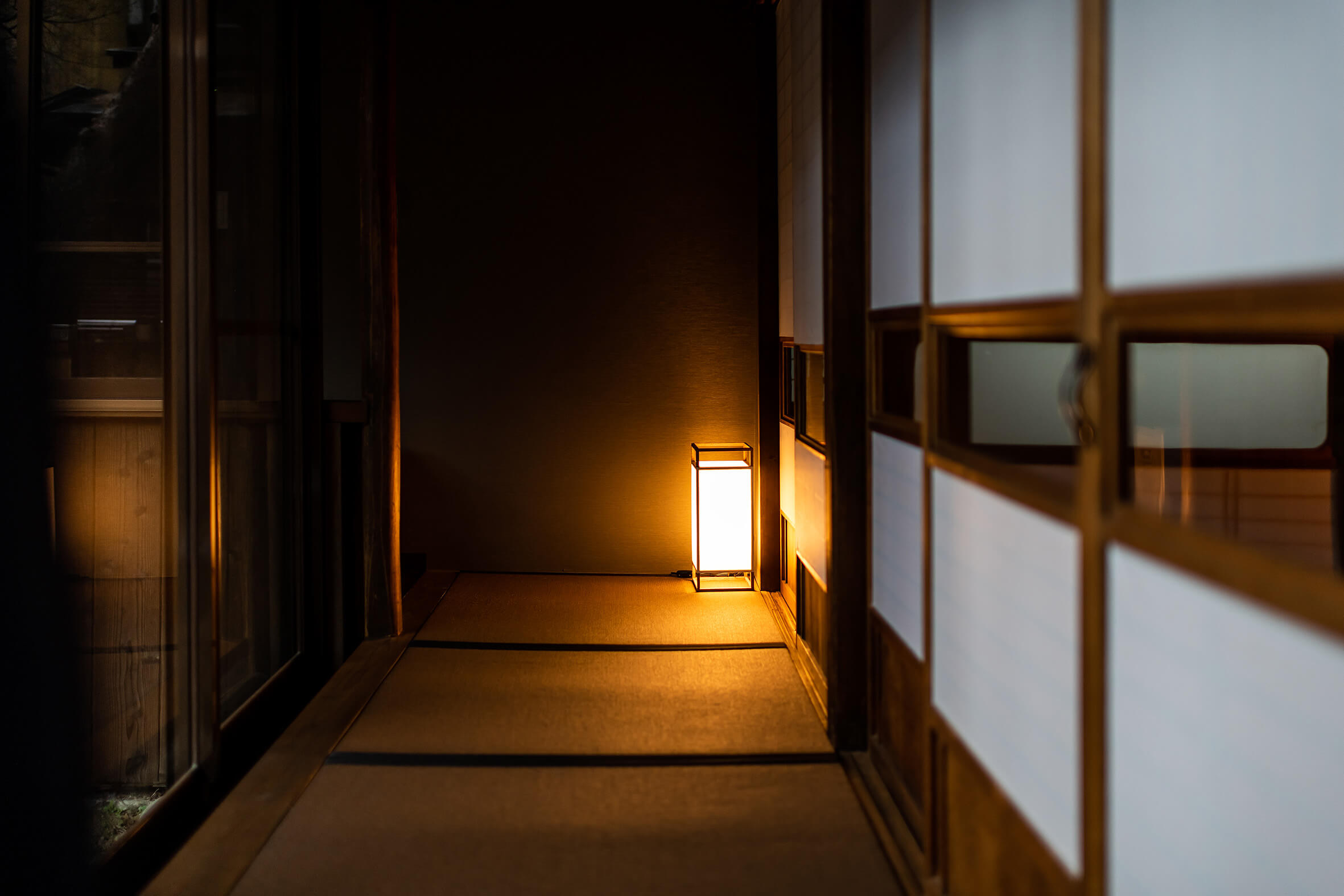In Praise of Shadows: Imperfection, Subtlety, and Shaping Your World

This small book had the largest impact on how I think about design and crafting products that change the world around us.
I'll dig into why.
The tranquil beauty of traditional Japanese spaces has captivated many in the West, who see them as ideals of zen serenity.
But when examining these spaces more closely, some interesting questions arise: Have you ever wondered why many traditional Japanese spaces feel so serene and tranquil? Why we in the West hold them up as scenes of zen bliss?
In his poetic book In Praise of Shadows, author Jun'ichirō Tanizaki gives us a window into traditional Japanese aesthetics and how their embrace of shadows, muted tones, and asymmetry connects deeply to their cultural values.
The lessons in the book become more powerful when you read it through the lens of this eye-opening quote:
Life can be so much broader, once you discover one simple fact: and that is that everything around you that you call 'life' was made up by people who were no smarter than you.
And you can change it, you can influence it, you can build your own things that other people can use. – Steve Jobs

Published in 1933, this brief 128-page book is filled with incredible insights that will open your eyes to a radically different conception of beauty. Tanizaki tells stories of why design in Japan is done differently than the West, and challenges copying ideas just because they seem popular.
By contrasting the Japanese love of shadows and dim lighting with Western ideals of brightness, Tanizaki reveals an alternative aesthetic framework that finds power in subtlety.

3 Core Ideas from the Book
- Imperfection
Allow imperfections and unfinished ideas to unlock innovation and ingenuity, rather than demanding flawless execution. - Subtlety
Focus on subtle enhancements over flashy disruption to create enduring excellence that's pleasing to the eye. - Shape
Play an active role in shaping the world around you. Design environments that seamlessly empower mindful focus and attention.
Defining Core Characteristics of Japanese Aesthetics
Tanizaki begins by outlining several defining contrasts between traditional Japanese and Western perspectives on beauty and good taste. Whereas the West values brilliance and illumination, the Japanese sensibility finds beauty in shadows and darkness.
Electric light overpowers Japanese shoji screens made of translucent paper, obscuring their delicate luminescence.
Tanizaki explains how Japanese construction uses shadows to intentionally highlight simplicity and irregularity.

This appreciation of asymmetry connects to the Buddhist worldview that perfection is not to be found in this world. The Japanese orientation seeks beauty within transient seasons and imperfect materials.
This manifests in the intentional aging of buildings through using unfinished materials that acquire patina over time. The textures of wood, paper, and clay reveal their authentic essence in dim lighting.
Japanese aesthetics emphasizes quiet subtlety rather than bold assertion. Beauty resides in the ephemeral, irregular, and imperfect. Restraint and frequent use of empty space define Japanese sensibilities.
Appreciating the Texture of Life
A core difference Tanizaki explores is how shadows and diffused light bring forth the genuine texture of materials and spaces. He explains how shoji screens used in Japanese homes filter light to avoid the harshness of electric illumination. The result is a soft luminescence that enhances the tranquility of the space.

Tanizaki extends this to critique how electric lighting denies mystery and depth by shining light on everything. He argues how shadows connect us to the essence of matter, revealing the patina of age in a way that harsh brightness obscures.
We tend to seek our satisfactions in whatever surroundings we happen to find ourselves, to content ourselves with things as they are; and so darkness causes us no discontent, we resign ourselves to it as inevitable.
There is much wisdom here on appreciating imperfection and finding beauty in transience. Letting go of desiring perfection unlocks newfound contentment.
Connecting with Traditional Values
By embracing shadow and asymmetry, Tanizaki reveals how Japanese aesthetics connect deeply to larger cultural values of humility, impermanence, and tranquility. The diffusion of light creates spaces harmonious with human life.

This contrasts starkly with the Western focus on order, symmetry, and domination of the environment. Tanizaki believes Japanese aesthetics align more closely to the essence of human experience.
Our ancestors, forced to live in dark rooms, presently came to discover beauty in shadows, ultimately to guide shadows towards beauty's ends.
There are profound lessons here on how our values shape our living environment. Creating spaces aligned with mindfulness and tranquility requires embracing the imperfect and ephemeral.
Creating Products with Unique Tranquility
In Praise of Shadows shows how aesthetics extend beyond just visual appearance. Truly excellent products seamlessly blend into users' lives, enhancing rather than disrupting spaces and rituals.
Technology creates the opportunity to design environments facilitating mindful focus. The Japanese love of diffused lighting that amplifies tranquility and shadows could inspire software modes that filter blue light and notifications to create sanctuaries of attention.

Building excellent products requires identifying values that improve users' well-being in intangible ways. There are deep insights in this book on how to create products and digital spaces that feel aesthetically enlightened, not just efficient and orderly.
The poetics of In Praise of Shadows will open your eyes to a radically different conception of beauty aligned with tranquility. Its lessons will inspire you to create products and spaces that elegantly elevate users' lives.
Beauty in simplicity and asymmetry unlocks new levels of excellence.
Diffused Light Reveals the Essence of Materials
Tanizaki believed that bright electric light denied the intrinsic essence of building materials and spaces. He argued that Western ideals lead to aggressively controlling the environment rather than living in harmony with it:
Our ancestors, forced to live in dark rooms, presently came to discover beauty in shadows, ultimately to guide shadows towards beauty's ends.
In contrast, the dominance of technology and electric light eliminated shadow and obscured the fundamental character of spaces and rituals:
And so only in countries where everyone goes to bed early are the evenings as beautiful as dawns.

The soft luminescence of candlelight and diffused sun passing through paper screens enhanced the texture of the material world. The patina of age becomes visible, expressing subtlety and organic irregularity. By embracing rather than obscuring shadows, Japanese aesthetics celebrated the ephemeral nature of life.
Connection to Cultural Values
For Tanizaki, the Japanese affinity for shadows and imperfection in aesthetics connected deeply to the culture’s philosophical and religious roots. The embrace of transience and asymmetry aligned with core Buddhist teachings on the temporary nature of the material world.

This contrasted with Western ideals of symmetry and perfection, which Tanizaki saw as impossible to realize fully in art and architecture. The desire to dominate the environment also conflicted with the Japanese aim of living in harmony with nature.
Tanizaki believed the tranquility of Japanese design arose from the culture’s values of humility, simplicity, and tranquility. The use of natural materials and dim lighting created spaces for human life rather than imposing order:
We do our walls in neutral colors so that the sad, fragile, perishable beauty of the shoji and fusuma will not be overwhelmed.
This cultivation of beauty in the ephemeral aligned spaces with authentic human experiences of imperfection and changing seasons. The Japanese orientation sought to enhance what already exists rather than aggressively remaking the environment.
Beauty Aligning with Human Life
Tanizaki’s reflections reveal how our cultural values shape living spaces and aesthetic orientations. The embrace of shadows in Japanese architecture refines tranquility and attention to subtle beauty. This reflects values of humbly coexisting with nature rather than overpowering it.
The Japanese approach crafts spaces for people rather than efficiency. Tanizaki contrasts this with Western perspectives that create disorder by dominating the intrinsic character of the environment.

He concludes by calling for preserving what little remains of the Japanese aesthetic spirit in the face of rapid Westernization and industrialization:
We would do well to recollect the past in all its concreteness, for in its impermanent qualities it gives us something to hold to.
There are profound lessons here on how excellent design eliminates friction with users’ lives. Products and digital environments can refine tranquility when rooted in values beyond order and power.
Applying Lessons to Product Design
In Praise of Shadows provides timeline insight into creating products and digital experiences that blend seamlessly into users' lives. Rather than asserting technological brilliance, excellent design empowers tranquility.

Consider how the dominance of notifications and constant connectivity disrupts focus. Products seeking to align with human values should aim to enhance spaces for reflection rather than aggressively grabbing attention.
Some examples of applying Japanese aesthetic wisdom:
- Crafting modes and settings for intentional disconnection
Software could empower focus by allowing users to mute notifications and filter blue light. This creates sanctuaries from distraction aligned with human needs. - Elevating rituals through appropriate simplicity
Excellent products eliminate complexities around core user rituals. Intuitive interfaces get out of the way, enhancing rather than obscuring daily habits and tasks. - Emphasizing textured minimalism
Following Japanese restraint in embellishment, great digital environments artfully frame emptiness and negative space. They replicate the peaceful diffusion of light through shoji screens. - Designing transient virtual spaces
Online spaces come and go, lacking the permanence of architecture. Excellent digital design accepts this ephemeral nature, focusing on the lived experience in the moment.
Tranquility and focus elevate user well-being. Products rooted in humility align with these values better than asserting technological prowess alone.
Excellence through Enhancing Lives
In Praise of Shadows provides a poetic window into the distinctive tranquility of Japanese aesthetics. The lessons from this alternative orientation can inspire designers seeking to create excellent products that artfully elevate users’ lives.
Key insights for a modern world from the book...
- Perfectionism stifles innovation.
Demanding flawless execution shuts down creative risk-taking. Allowing imperfect and unfinished ideas to emerge surfaces new possibilities that reimagine experiences entirely. Rather than polishing individual features, excellent design finds breakthroughs in unconventional places. - Bold brilliance glares more than illuminates.
Chasing flashy features and aggressive disruption overlooks the wisdom in subtle enhancements. Restraint and strategic empty space reveal deeper insights than cramming in tech for tech's sake. Advancements can unfold gradually like shadow passing through a shoji screen. - Disruption is not always progress.
The most effective advances empower existing rituals and spaces rather than breaking them. Before disrupting habits and flows, ask what meaning can be uncovered there. Reinforce relationships between proven fundamentals rather than forcing adoption of the unprecedented. - Attention is not a resource to exploit.
Treating user attention as a commodity to extract value from leads design astray. Design should shelter focus rather than aggressively grabbing user attention with notifications and stimuli. Align technology with the need for sanctuaries of mindful presence. - True excellence is invisible.
The most artful products blend seamlessly into people's lives, complementing existing spaces and rituals. Rather than imposing technological will, excellent design practically disappears. When digital tools empower tranquility, their interfaces recede into the background.
The timeless wisdom in this book provokes reflection on how our values are embodied by living spaces and tools.
We become what we behold... we shape our tools... and then our tools shape us... – Father John Culkin
Be inspired to craft products and environments that unfold human potential.
And remember: you decide whether, and how, to shape the world we all live in.

